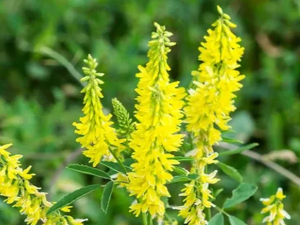Biodiversity Enrichment Progress
One of the restoration goals at Oakhurst is to improve the plant biodiversity, particularly of prairie forbs and grasses. While there were some common species present, many were absent or only a few individual plants existed. So while I could say that wild bergamot existed in the G1 unit, it was only found in a couple of locations. By dividing the management unit into smaller workzones, and recording the species within that area, we are better able to visualize the distribution of a particular species, without resorting to transects.
The next step was to compile lists of target species, and associate them with workzones, the intent being to establish the plants in that location. Each list can be specific to a particular habitat, such as obligate wetland plants, or only include species that are easy to harvest or establish. As such, I currently have four lists - a basic prairie list, a wet prairie list, and enhanced prairie mix, and a savanna list. While the basic prairie list is associated with numerous workzones, the wet prairie is tied only to areas where the hydrology is more favorable; in most cases, this is a specific part of a workzone known to flood in the spring. The enhanced mix consists of more conservative species, many that will needed to be requested, and whose taget locations contain establish praire greasses.
Surveys
In order to measure progresss, annual surveys need to be conducted. The first survey in a workzone provides the baseline data, that is, the species that already existed there. All subsequent surveys will detect the establishment of new species, or perhaps the loss of a particular plant. When a species is recorded to workzone, it is logged with a status of either original or new; if a species hasn't been detected in three consecutive years, that status flips to undetected.
Seed Broadcasting
In addition to performing surveys, I also record whenever seed is broadcast into a workzone at the end of the season. In this case, the plant is logged with a status of seeded.
Target Workzones/Locations
The long term goal is to improve the plant biodiversity across the preserve, but in order to accomplish this, we need to factor in the original conditions of each workzone. Some workzones already have prairie species established - particularly grasses - while other have invasives that must be controlled. Therefore workzones are prioritized.
- Level I: these are locations where the goal is to establish a diverse mix of prairie grasses and forbs (at least 50 or more). These species will be taken from basic, enhanced and wet prairie mixes. Once established, these locations will serve as a seed source for future harvests. Controlling brush and invasive species in these areas will take priority over other workzones.
- Level II: these are locations not dominated by invasive species such as smooth brome, reed canary grass, sweetclover or crown vetch. The goal is to establish a basic mix of 25 species across a wide area which can then be left to self seed.
- Level III: these are locations where invasive species dominate, and so need to be controlled if seeding is to be successful. Here the target is to reach 20 different species from the basic prairie mix.
Target Seedmixes
Below are the different seedmixes currently defined, and their overall distribution metric. Clicking on each one will take you to the details page.

 Return Home
Return Home


